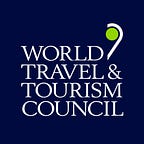How can destinations reduce overcrowding?
In this series we’re considering the issues around overcrowding and looking for solutions.
Posts one and two discuss how travellers can change their habits and how destinations can manage demand.
In this post, we look at ways to improve visitor experiences to ensure a meaningful visit even when a destination is at its busiest.
No matter how we try to manage demand, some destinations will always be very popular, particularly at peak times. There’s also a degree to which overcrowding is a perception. Some might consider a place ‘too crowded’ whilst others wouldn’t find it a problem.
So, aside from trying to manage the numbers of visitors, part of the solution is about managing the visitor experience to ensure it doesn’t feel crowded. Here are a number of ways to do this:
1. Build better infrastructure
Up to a point, overcrowding can simply be improved with better infrastructure. This winter, a new gondola was installed at Courchevel in the French Alps, increasing seating by 25% and running twice as frequently, virtually eliminating queues in a stroke. Airports are constantly looking for ways to improve passenger flow with new technologies like iris scanners for passport control and full body scanners at security. Many small beach resorts in Dorset and Devon in the UK offer free park and ride bus schemes. Visitors park their cars at sites away from the congested narrow streets of the old towns and use the free buses to access the beaches. Of course better infrastructure can be a significant cost. In the previous post, we discussed the way that entry fees can be used to manage demand. Some of the profits from these fees can be used for these kinds of high cost projects.
2. Provide better information
Allowing visitors to plan their visit to minimise delays is important. The simple practice of telling people which times are busiest so they can choose when to visit is often overlooked. Google now includes this kind of information for many places when it displays them in search results; so the data is increasingly available.
Once a visitor has arrived at an attraction, their needs and interests may differ from other visitors. At the Louvre in Paris, everyone will want to see the Mona Lisa, but some will be in a hurry to just see the main exhibits, others will want to spend all day there. Some will have kids and some will have particular collections they have come especially to see. Making sure visitors know where key sights are, helping them navigate easily along a route that suits them will help dispel sensations of congestion. Typically this is about quality maps, ample signage and easy to understand information. Coupling this with real time crowd data allowing visitors to adapt their plans is a great idea that could be adopted far more widely. Many theme parks do this, providing monitors with queue times at rides so visitors can choose which ride to go on when.
3. Manage the flows
The way people journey around an attraction or through a destination can also lead to congestion. Often there’s a designated route and everyone follows the same journey. This creates bottlenecks, as some move more slowly than others. At its most basic, flow management involves literally closing a door and stopping people moving to the next stage of the visit until those ahead move on. But for places where there are multiple potential journeys, offering a range of ways and places to start and finish a visit can drastically reduce the impression of congestion.
The Palace of Versailles outside Paris has a range of themed itineraries. This helps to distribute visitors to different parts of the site. Increasingly modern technology is helping with understanding visitor flow. Wifi and bluetooth can be used to monitor peoples’ movements and understand which times of day are busiest where. At the Schönbrunn Palace in Vienna, ticketing is controlled by a computer that calculates the maximum number of visitors permitted in the rooms. It then issues the appropriate number of tickets each hour for visitors paying on the day.
4. Create supporting experiences to disperse visitors
If you reach the climax of your visit the moment you arrive, it can be a little disappointing. People visit Stonehenge to see the famous circle of stones, but understanding the feats of ingenuity needed to construct them and learning why they were constructed adds to the experience immeasurably. It’s a hugely popular site and so measures have been taken to manage the visitor experience and avoid overcrowding. A new visitor centre around a mile from the stone circle gives visitors time to learn about the site before their timeslot to visit the stones arrives. Visitors then walk slowly up to see the stones.
Using themed driving routes between sites in close proximity to each other and offering combined tickets to sites that compliment each other are additional ways to enhance experience at destinations whilst also dispersing visitors more widely. Sometimes simple changes can have a surprising impact: both Canterbury Cathedral in the UK and Santiago de Compostela in Spain, found that by enforcing silence in the crypt, visitors stayed for less time and showed greater respect.
New technologies offer all manner of ways to manage visitor movement through attractions and enhance experience. Smart phone apps, augmented reality headsets, and more mean that the tourist experience of the future could be far more immersive and inspiring. We look at some of these technologies in a future post in this series.
The next post in this series looks at ways to help local communities deal with some of the problems associated with overcrowding.
